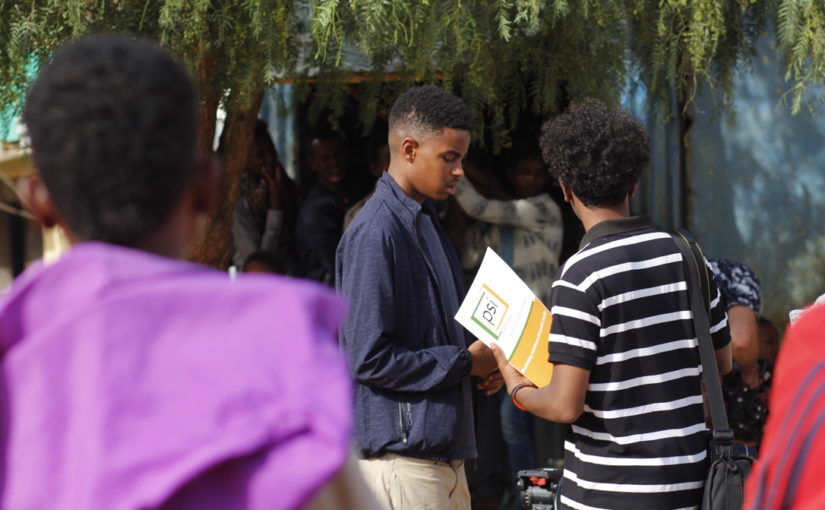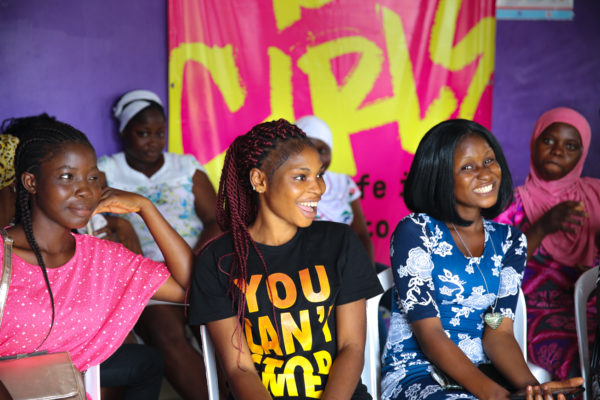This blog series is a part of the A360 Open Source, a treasure chest of learnings and tools that you can apply as we work, together, to drive youth-powered sexual and reproductive health breakthroughs.
Dear Future Implementer,
We, like you, know too well: adolescent and youth sexual and reproductive health solutions are complex. What works in one place may not work in another.
That’s not failure. It’s simply the truth.
But with evidence-based Adaptive Implementation (AI) in our toolkit, we can stay responsive to the gaps that inevitably arise as we take interventions out of test environments and drive toward sustainability at scale.
AI has powered us with a systematic approach to scientifically making sense of what it means to take our programs to new locations, and do so in a way that responds to variations unique to the diversity of contexts in which we work.
AI allows us dig into a range of qualitative and quantitative data to real-time track girls’ experiences with our programs. And through it, we can scrap what’s not working, and replicate what is.
This section of the A360 Open Source charts out our experience applying AI, and the learnings you, too, can use today.
What did we do? What did we learn?
Here are four insights from our AI experience you can use today.
1. Implementation Science researchers argue that interventions do not reach full optimization prior to implementation. And they’re right.
“We believe in radical transparency and avoid sitting on ‘secrets.’ Nobody learns that way. We want people to engage.” —Claire Cole, A360 Implementation Science & Learning Advisor, PSI
Click on the below headers for more information.
Click here to learn how A360 put AI into practice.
Closer Look
Real life environments are diverse. A one-size-fits-all approach just doesn’t work.
Through AI, we can tap into mixed methods data to track in real-time girls’ experiences so we can fail-fast to adapt even faster. It’s our way of ensuring girls’ needs and concerns at the center, every step of the way.
What this Looks Like
Through weekly inter-departmental reviews, our team in Tanzania continually identifies and further investigates high and low performing sites to understand how to leverage successes and course-correct for challenges.
Insight in Action
In Mbeya, a city in southwest Tanzania, the team recorded 45 adopters per event in early 2018, surpassing the 18 average across Tanzania’s other event regions. The key ingredient? Engaging the Government’s Youth Development Officers (YDOs) to help mobilize girls. This insight led the team to replicate YDO engagement to its other sites. Since initiating AI in January 2018, A360 Tanzania has increased its conversion rate by 24% (34% in January 2018 to 58% in Feb. 2019).
2. AI ensures that girls’ needs, and those of the health systems in which they rely on, guide the path to scale.
“We are now seeing these interventions play out in different geographies and different cultures. Now we are seeing it working. This thing is now real. It’s really rewarding.” —Edwin Mtei, A360 Tanzania Program Director, PSI/Tanzania
AI prompts us to consider:
- How can we account for the context of the people we are working for and with?
- How can we improve the design of our programming to best serve the implementers who deliver the service?
- And how can we effectively tweak and tailor our intervention it as we repeat it across new environments?
Click here to learn how A360 put AI into practice.
Closer Look
In an A360 country, we wanted to reach more girls at rapid speed and scale, which meant further decentralizing how we mobilize girls to services by rapidly onboarding new local partners to support on outreach.
So, we invited school teachers to engage in mobilization.
Insight in Action
In our data monitoring, we saw the numbers of girls who turned up for A360 programming rise while voluntary acceptance rates dipped. We dug into our qualitative data and found that girls trust’ in the intervention was being diminished; teachers were giving girls messages to attend for reasons that were counter to the girl-powered concepts core to A360’s unique approach. For example, suggesting a girl should attend an A360 event to “learn to avoid temptation” rather than emphasizing the actual aim: to help her reach her dreams.
It’s an example of how entrenched social norms—even when we designed to guard against them—can reemerge and disrupt in places one doesn’t expect, and especially as you go to large scale.
What We Learned
Without AI, we might have continued with this same approach to mobilization in schools and only realized when it was too late that this kind of organic adaptation was hurting how we were reaching and serving girls.
3. AI allows us to account for health system priorities to support the ultimate goal of transition to government ownership.
“Smart Start is best program ever for this age group. Girls care about this, it is working, demand created, and opening eyes of service providers, and the government.”—Metsehate Ayenekulu, A360 Ethiopia Program Director, PSI/Ethiopia
Sustainability means accounting for not just the girls we serve, but the frontline workers at the helm in delivering the intervention.
Click here to learn how A360 put AI into practice.
Closer Look
In Ethiopia, A360’s Smart Start supports the government’s health extension program to “catch-up” by serving all married girls and their partners in some of Ethiopia’s hardest to reach communities. By working in partnership with Health Extension Workers (HEWs) and by engaging community leaders, Smart Start delivers a solution to close a pervading unmet need, while leaving behind a health system capable of continuing coverage.
But we didn’t quite get it on round one.
Insight in Action
We knew Smart Start was sparking a catalytic effect for HEWs using it to engage young married couples. But through an Itad independent evaluation, we found gaps in where we were, and where we weren’t equipping HEWs to effectively navigate a complex portfolio of services.
We responded by using our real-time data, and AI approach, to amend the program, and make it one not just for girls by for HEWs, too.
There’s more! This article maps how A360 used real-time data to make Smart Start a program for girls and the health system at the frontline in delivering the service.
4. You can take what we have started and advance the interventions to meet the unique needs of your specific context. That’s the power of AI.
“The A360 model opens the health and SRHR space to look more holistically at youth needs. What’s interesting – the things that we pulled out in the A360 Blueprint are relevant for all three countries in three very different programs. To me, that illustrates these things can be done with other programs.” —Amy Uccello, SR. AYSRH Technical Advisor, PSI
There’s a lot about the A360 model that we’ve confirmed across A360’s intervention countries. But so too did we recognize that there were new areas to expand what it means to take the A360 approach to new places and across country contexts.
Namely:
- How can we address adverse gender norms?
- How can we engage unmarried couples, particularly in environments in which adolescents stay mum about their relationship status?
- How should we position contraception within a context with high rates of early marriage?
That’s where our work comes into play in Mozambique. There, we’re replicating, validating and then contextualizing the A360 model through the PSI/Mozambique-powered and UK Aid-funded Vale a Pena project.
Want to dig into Vale-a-Pena’s learning journey? Check it out on A360’s replication station, here.

“To our fellow implementers: You don’t need to start from ground zero with your insights for girls. You can build on what we’ve learned and prototype our concepts or concepts you’ve seen elsewhere. You can borrow from other fields of study.” —Melissa Higbie, Project Director, A360
Want more? Get going by diving into the A360 Adaptive Implementation phase, here.





